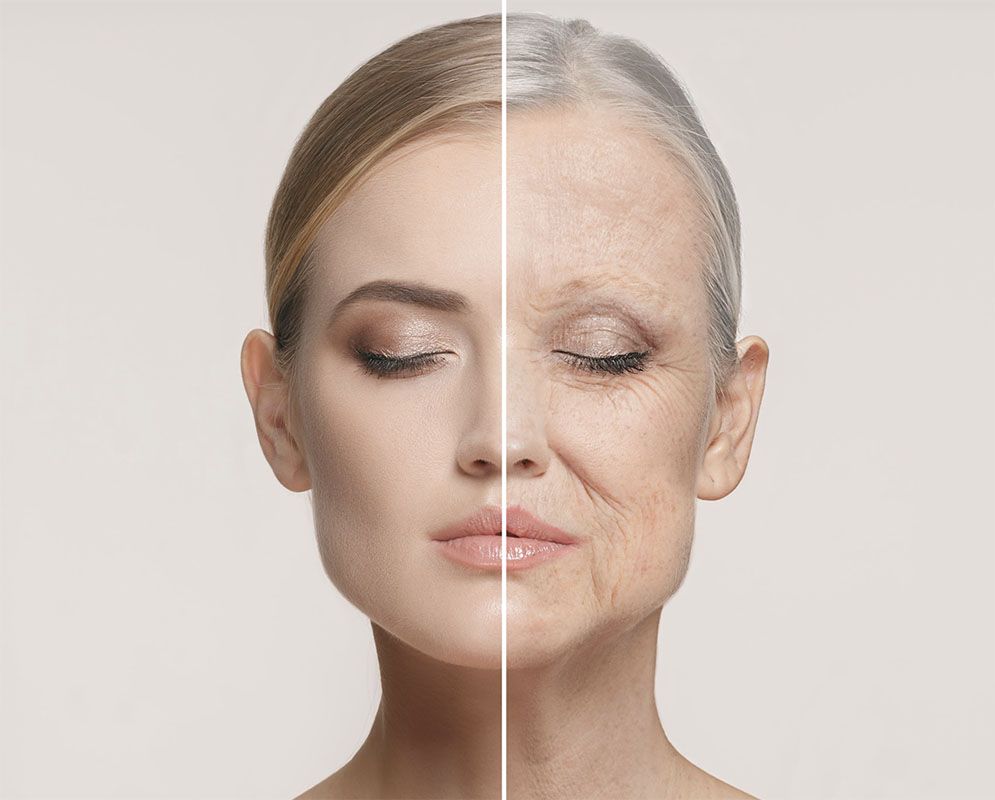

BOTOX® Cosmetic
BOTOX® Cosmetic is a prescription drug that, when injected, temporarily paralyzes muscles. It contains a purified and safe form of botulinum toxin A, which is produced by the microbe that causes botulism. Manufactured by Allergan, Inc., it is used to treat permanent furrows and deep wrinkles in the skin that are formed by the continual contraction of facial muscles. In addition to its cosmetic applications, it is used to treat a number of medical problems, including excessive sweating, overactive bladder, neck spasms, crossed eyes, chronic back and jaw pain, and migraines.
Applications for BOTOX® Cosmetic
Although originally approved by the U.S. Food and Drug Administration for the treatment of eye and muscle spasms, BOTOX® Cosmetic was quickly recognized for its cosmetic value. Properly placed injections of BOTOX® Cosmetic block nerve impulses sent to muscles, weakening them to the point where they cannot contract, and temporarily eliminating moderately severe furrows and lines. BOTOX® Cosmetic is used to treat the following:
- Forehead furrows
- Frown lines
- Crow’s feet
- Skin bands on the neck
BOTOX® Cosmetic Procedure and Results
Using a very fine needle, BOTOX® Cosmetic is injected directly into facial muscles that are causing furrows and lines. Receiving the injections requires no anesthetic, but some doctors choose to numb the area to be injected with ice packs or a topical anesthetic cream. Results can usually be seen within 7-10 days and typically last up to four months, although areas that are treated on a regular basis may retain results longer. Injections should be given only by qualified medical professionals.
Potential Side Effects of BOTOX® Cosmetic
Injection-site side effects of BOTOX® Cosmetic are usually mild and temporary, and include the following:
- Pain
- Infection
- Inflammation
- Tenderness
- Swelling
- Redness
- Bleeding
- Bruising
Normal activities may be resumed immediately after receiving injections.
Additional Resources
MedlinePlus
National Institutes of Health
Centers for Disease Control and Prevention
Eunice Kennedy Shriver National Institute of Child Health and Human Development
U.S. Department of Health & Human Services
U.S. National Library of Medicine
WebMD
BOTOX® Cosmetic
BOTOX® Cosmetic is a prescription drug that, when injected, temporarily paralyzes muscles. It contains a purified and safe form of botulinum toxin A, which is produced by the microbe that causes botulism. Manufactured by Allergan, Inc., it is used to treat permanent furrows and deep wrinkles in the skin that are formed by the continual contraction of facial muscles. In addition to its cosmetic applications, it is used to treat a number of medical problems, including excessive sweating, overactive bladder, neck spasms, crossed eyes, chronic back and jaw pain, and migraines.
Applications for BOTOX® Cosmetic
Although originally approved by the U.S. Food and Drug Administration for the treatment of eye and muscle spasms, BOTOX® Cosmetic was quickly recognized for its cosmetic value. Properly placed injections of BOTOX® Cosmetic block nerve impulses sent to muscles, weakening them to the point where they cannot contract, and temporarily eliminating moderately severe furrows and lines. BOTOX® Cosmetic is used to treat the following:
- Forehead furrows
- Frown lines
- Crow’s feet
- Skin bands on the neck
BOTOX® Cosmetic Procedure and Results
Using a very fine needle, BOTOX® Cosmetic is injected directly into facial muscles that are causing furrows and lines. Receiving the injections requires no anesthetic, but some doctors choose to numb the area to be injected with ice packs or a topical anesthetic cream. Results can usually be seen within 7-10 days and typically last up to four months, although areas that are treated on a regular basis may retain results longer. Injections should be given only by qualified medical professionals.
Potential Side Effects of BOTOX® Cosmetic
Injection-site side effects of BOTOX® Cosmetic are usually mild and temporary, and include the following:
- Pain
- Infection
- Inflammation
- Tenderness
- Swelling
- Redness
- Bleeding
- Bruising
Normal activities may be resumed immediately after receiving injections.


